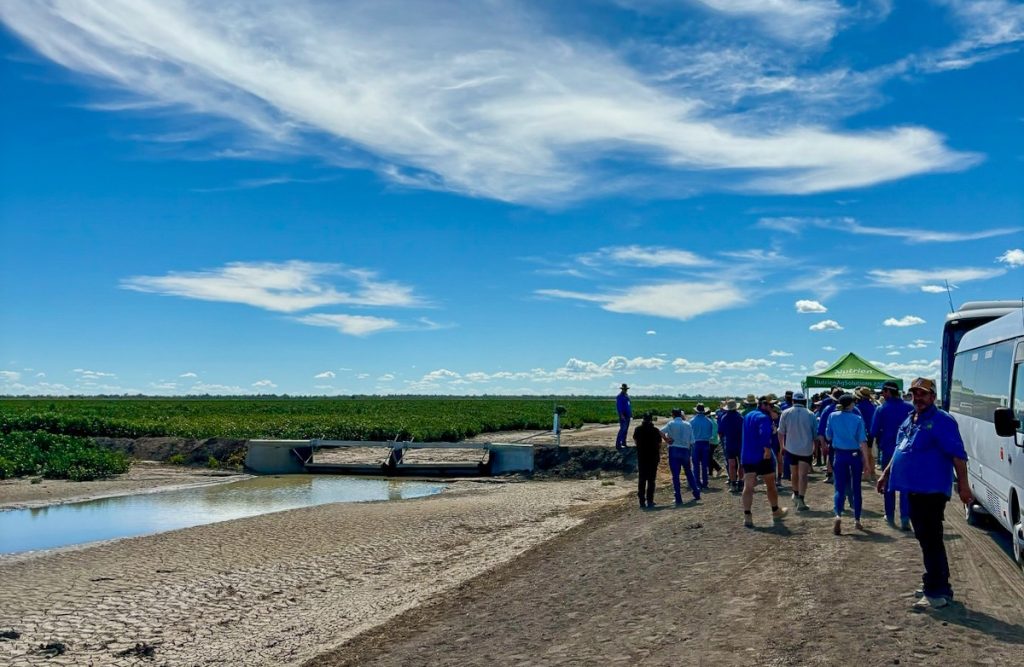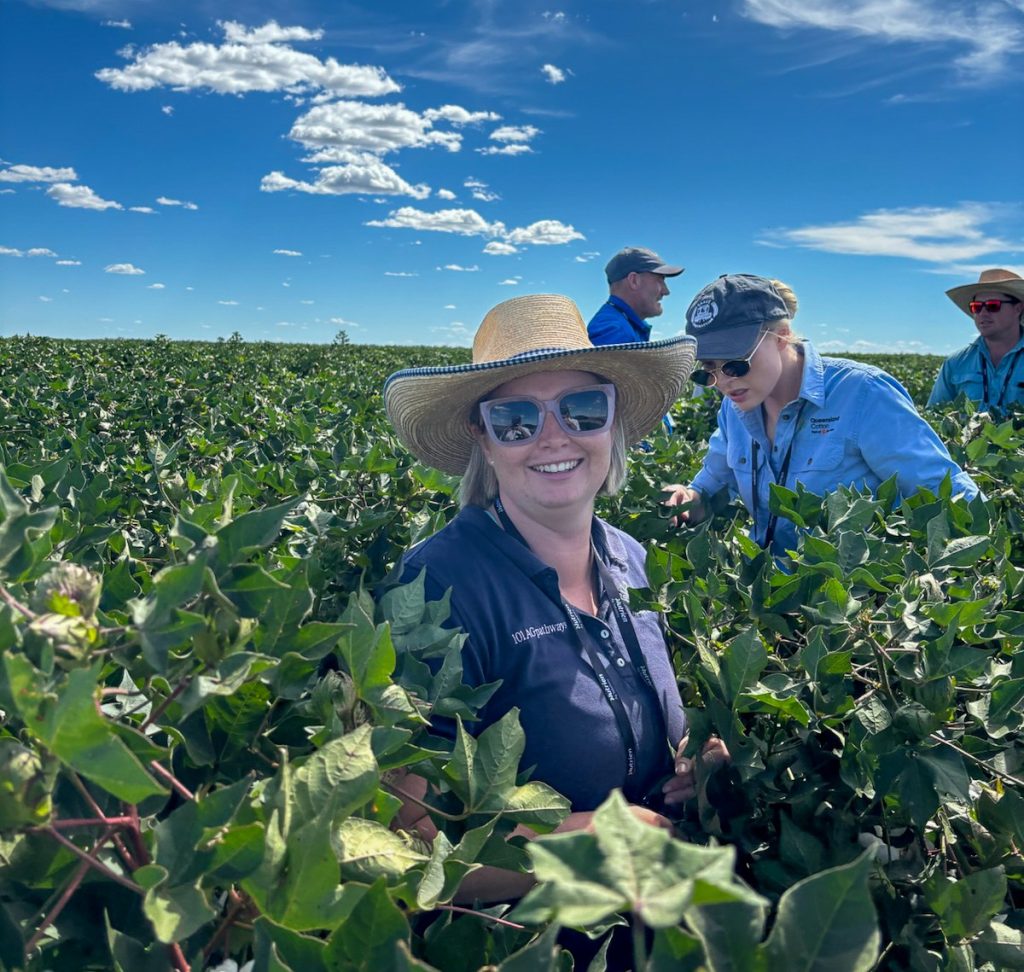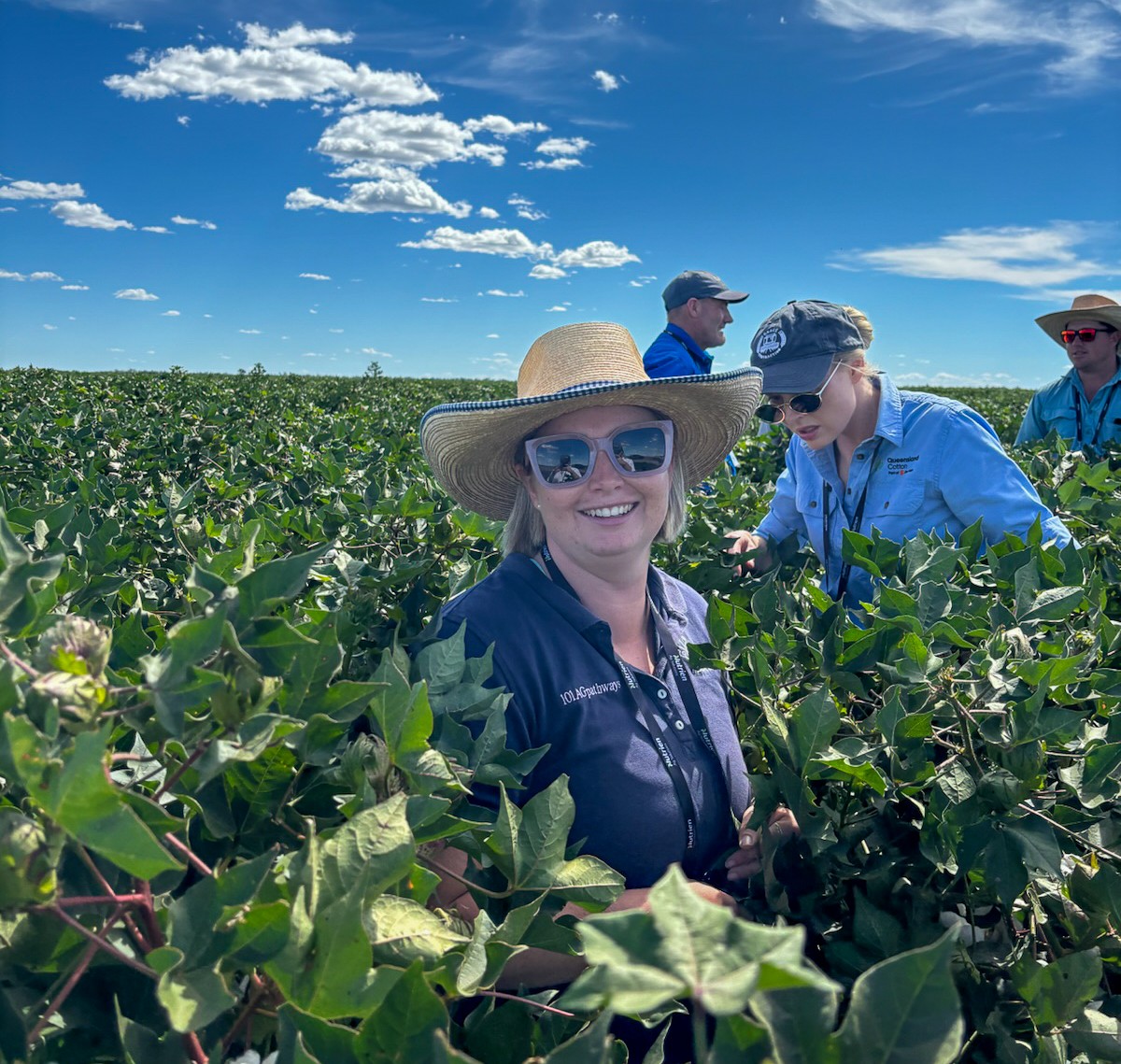Water-saving techniques reducing costs for Northern Basin growers
news
Published 02 Apr 2025
Written by Caleb Back
Cotton is a thirsty crop, but what if we can reduce its overall water consumption? That’s what Goondiwindi Regional Hub Manager Marti Beeston travelled to Dirranbandi to find out.
Joining Cotton Australia, the peak body for Australia’s cotton growers, Ms Beeston visited ‘Clyde’, one of Australia’s largest cotton growing properties run by 2024 Grower of the Year award recipient Scott Balsillie.
Based south of Dirranbandi Ms Beeston toured the property to learn how innovative approaches to irrigation have led to significant improvements in the crop’s consumption of water across the property. Or simply put – owners have learnt how to use water more efficiently.
“Clyde is a fascinating example of how farmers are always looking to get more out of their water and improve yields. The work that Scott has put into his property is a testament to the ingenuity of irrigators,” Ms Beeston said.
“Scott has worked hard to develop and diversify his property through improving monitoring and implementing more efficient ways to irrigate.”
“The biggest improvement he showed us were the bankless channels which are an innovative alternative to the industry standard of siphons,” she said. “Bankless channels use gravity to feed water deeper into the crop. Scott started by grading the paddock at a slight angle, with a head ditch at the top and a tail drain at the bottom.”
“Bankless channels were shown to have saved 2.5 megalitres a hectare, going from 10 megalitres per hectare down to 7.5 megalitres.”
On large properties like Clyde, and with such a thirsty crop as cotton, that’s a big saving.
“Water fills in the head ditch and slowly filters down into the bottom of the crop, as the channels are cut much deeper than traditionally seen with siphons – allowing for the water to really get where it needs and avoid runoff,” Ms Beeston continued. “Excess water then flows down the paddock and into the tail drain, where it’s transported to another paddock for use.”
“This means Scott not only gets more water to where it needs to be and improve yields, but also save water, reduce evaporation, and save in machinery and labour costs,” Ms Beeston says.

The visit to Clyde also provided an opportunity to connect with the community, stakeholders, and irrigators in the region.
“As a hub manager, part of my role is to keep our partners informed about One Basin CRC’s research projects and showcase opportunities to improve on-farm practices such as efficient water use. Coming to Clyde is a great way to engage with irrigators in the region, as we seek to develop industry-led solutions that support Australia’s irrigation regions to be the most productive, resilient, and sustainable in the world,” Ms Beeston said.
“Goondiwindi is home to a large cotton growing community, particularly out west of the town towards St George and Dirranbandi, where Clyde is located,” she continued.
“There’s a lot of innovation happening in the region. Soon we’ll be unveiling the upcoming evaporative losses project, which will find new ways to save water in the cotton industry by reducing water loss from irrigation dams.”
“This project will be based in the Goondiwindi-St George Area and will benefit properties like Scott’s and many others.”

The evaporative losses project will be a place-based research project in collaboration with the University of Southern Queensland and the Queensland Department of Environment, Science, Tourism, and Innovation. A PhD and a postdoctoral student will be funded as part of the research, to be based at the Goondiwindi Regional Hub.
“To ensure our research projects respond to the current and future needs of industry, users, and communities, we’ve made the commitment to undertaking place-based, industry-led research. This collaborative approach not only supports our regions, but means project outputs are guided by the users who will hopefully adopt them,” Ms Beeston says.
“With the formal commencement of the project just around the corner, we’re looking forward to working with irrigators in the northern Murray–Darling Basin and find new approaches to water use in a region constantly at threat of climate extremes,” she said.
“If you’re an irrigator in the northern basin with significant dam storage, reach out to the Goondiwindi Hub and get involved.”
Learn more about the Goondiwindi Regional Hub.
To stay up to date with the evaporative losses project, subscribe to our newsletter here.
Latest news & events
All news & eventsWebinar recording: Working With Country To Heal
Read MoreBuilding capacity for Basin communities to respond to variable water futures
Read MoreDelivering the Commonwealth Environmental Water Holder’s (CEWH) Flow-MER 2025 Annual Forum
Read MoreMurray Darling Association 2025 National Conference: Griffith drives Basin-wide water collaboration
Read More